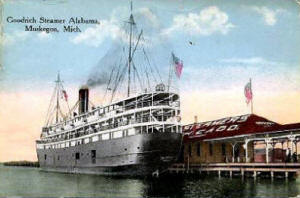
Downtown Muskegon
1900-1925
View a variety of postcard and images
of the Muskegon area from the era.
Click image to view additional details.
|
 Downtown Muskegon Downtown Muskegon
1926-1975
View a variety of postcard and images
of the Muskegon area from the the industrial age.
Click image to view additional details.
|
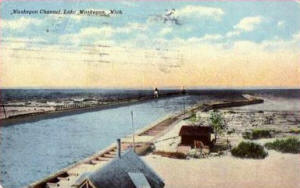 The
Path to Bluffton The
Path to Bluffton
The trip from the Goodrich Dock or Union Station in downtown
Muskegon, to the playgrounds of the Actors' Colony, Lake Michigan
Park and Pigeon Hill involved a leisurely ride down Lake Street -
later known at Lakeshore Drive.
Click image to view
additional details.
|
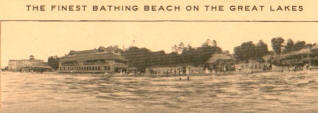
Lake Michigan Park
Featuring entertainment facilities including a large bathhouse
pavilion, a dancing pavilion with bowling alleys, a 600-seat
theater, a lunch room, and in later years, an amusement park with a
Ferris wheel and a roller coaster. Located at the end of the
trolley line in Muskegon, it was referred to as the "Coney Island of
the West" in advertising. Now known as Pere Marquette Park, it
features one of the cleanest beaches in the United States.
Click image to view
additional details.
|
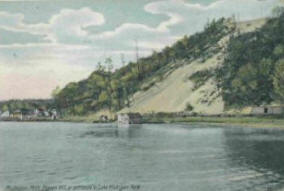
Pigeon Hill
One of the largest dunes on Lake Michigan, this mound of constantly
shifting sand soared nearly 300 feet in the air and covered
some 40 acres at its base. It dwarfed the surrounding
landscape and served as a backdrop for the homes
in the Actors' Colony.
Click image to view
additional details.
|
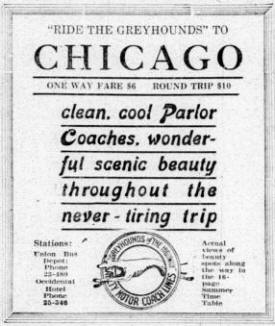 Muskegon,
Michigan: Muskegon,
Michigan:
Where Greyhound got it's name
Edwin Carl Ekstrom, launched Safety Motor Coach
Lines in Muskegon in 1924. Providing intercity service between
Muskegon and Grand Rapids, the firm was a direct competitor to local
interurban service.In a few short years, the logo from Safety Motor
Coach Lines became the nationwide symbol of Greyhound, and Ekstrom
would become the company's president.
Click image to view
additional details.
|
|
|